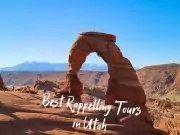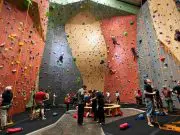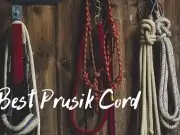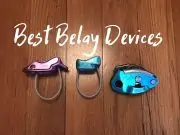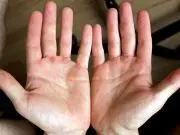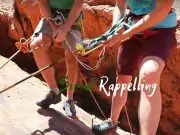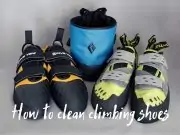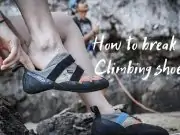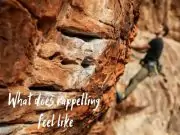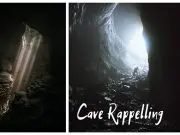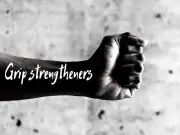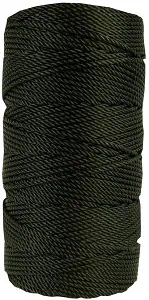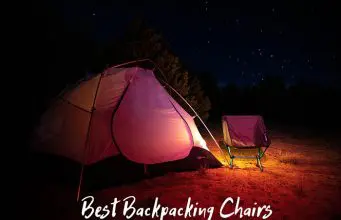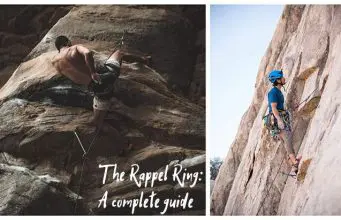When it comes to twine and cordage, there are so many products out there that it’s quite hard to keep track of them all. The biggest problem is choosing the best twine for the job at hand, as some of them were just designed to perform better in certain situations. That’s certainly the case with bank line – a relatively inexpensive twine that can replace more popular offerings such as the paracord without too many issues.
Is bank line better than paracord, though? Probably, in certain scenarios, but I would only use it for lightweight tasks around the house or for bushcraft. In this article, I’ll share everything there is to know about bank line, including what to use it for, what is it made of, and where to get the best one. Let’s start with the structural composition of bank line and its overall strength, shall we?
What is bank line made of?
Bank line is usually a black nylon cord that looks quite similar to the netting you would find on a tennis court. However, what makes it stand out among other offerings is that it is incredibly resistant to UV rays, it is very strong for its weight, and it is readily available.
One thing to keep in mind is that bank line is tarred. Basically, it has a tar coating that improves its knot holding performance. However, this tar layer gives it a slightly sticky feel, as well as an instantly recognizable odor. As far as the smell is concerned, it usually goes away after a while, and you can get used to it relatively quickly. If you’re bothered by the smell, you can just leave the bank line outside in the wind for a few weeks. The wind will dry off some of the tar, and the petroleum odor should dissipate considerably.
What are the main uses and advantages?
Since it has a smaller diameter when compared to other offerings (paracord comes to mind), it takes up less space in your bag while offering the same amount of tensile strength. That’s efficiency, and I’m a big fan of it!
Bank line is quite popular with survivalists or bushcraft enthusiasts, mostly due to its versatility and strength. You can use it to lash tents, food bags, and gear racks, or you can create garden shelters. As long as you don’t exceed its tensile strength, bank line can be used for a plethora of applications. You can tie knots with it, anchor heavy objects in place, or use it for fishing.
Actually, bank line was originally created for trotline fishing. That’s the practice of setting up a long span of cord from one bank of the river to another, hence the name. This particular type of fishing works well for catfish, and people still practice it to this day.
What are the main types?
There are many different sizes available, but I’m going to tell you about two of the most popular ones. First off, #36 bank line is very popular for its strength, while #12 bank line is thinner and is generally better for lighter applications. The #36 variant has a breaking strength of around 320 pounds, while #12 bank line can withstand 100 pounds.
When it comes to type, you can have your pick between twisted and braided bank line. The differences between the two are noticeable at a glance, but I wouldn’t say that any is significantly better than the other. As a personal preference, I like to go with braided, as that just seems a bit stronger to me overall. It all has something to do with the fiber weaves and how they wrap on each other. Furthermore, braided bank line is less likely to fray at the ends, which means you won’t have to burn it to prevent this fraying.
Twisted bank line has its advantages as well. You can always unravel the individual strands to obtain smaller strands of it. The ends will fray, though, so keep that in mind and prepare accordingly.
Where can I buy a high-quality bank line?
If you’re looking to buy, you should only purchase this cordage from reputable manufacturers. As I’ve mentioned before, this is not a particularly expensive product, so there’s no need to cut corners. Some of the best bank line I’ve come across was made by Catahoula (braided) and Ironclad Supply (twisted), both of which sell their products through Amazon.
Both alternatives are of exceptional quality, and they shouldn’t let you down as long as you use them properly. Let’s have a closer look at each, shall we?
Catahoula Tarred & Braided Nylon Twine.
This is my default choice and one of the best nylon twine that you can get your hands on right now. It’s made right here in the United States, and it features a braided design instead of a twisted one. What does this mean? Well, braided bank cord will not unravel as easy as twisted one, and it also has a sturdier feel to it.
Catahoula applied a special tar treatment to this twine, which allows it to grip better when you’re tying knots. It’s worth noting that the tar treatment is not particularly sticky but it’s definitely noticeable. The tar doesn’t rub off on other items, which is a sign of quality in my book.
The overall spool weight is around 1.0 lb, but that’s for the #12 variation. There are several different options to choose from, ranging from #12 all the way up to #96.
No products found.
Iron Clad Tarred Bank Line.
Created by Ironclad Supply in Jonesville since 1989, the Ironclad tarred bank line should definitely be your go-to choice if you’re looking for the best twisted bank line out there. Advertized as highly superior to paracord, this product is quite versatile and can be used for a variety of applications, including decoy lines, net making, and even as a trotline.
This nylon twine is perfect for fishing, camping, bushcraft or hunting. It features a dense coat of tar that makes it highly resistant to UV light, moisture, rot, and abrasion. This treatment also allows it to stick to itself when you’re tying knots, but it won’t stick to your hands or equipment.
This #36 twisted bank line weighs in at 1/4 lb and boasts a length of 117 feet or 39 yards. It has a tensile strength of 350 lb and a diameter of 0.085″.
No products found.
Scenarios where bank line is better than paracord.
In some situations, bank line is more useful and reliable than paracord, and vice versa. For general outdoor use, I think bank line is the better choice, as you can carry more per weight and can use it for simpler tasks without worrying that you’ll waste it. With paracord, you might not be inclined to use it for menial work because of the price and the slight premium nature of it.
With this cordage, I’m not worried at all if I lose some of it because it’s just so easy to replace. Obviously, this line is better used for fishing when compared to paracord, and it can also be used to create snares or traps. If you want to learn more about the main uses of paracord, just have a look at my guide right here.
The main differences between the two explained in a table.
| Point of comparsion | Paracord 550 | Bank Line #36 |
|---|---|---|
| Cost per foot | $0.15 | $0.05 |
| Water absorbance | Water makes it weaker | Repels water |
| Knotting performance | Good for tying knots | Excellent for tying knots |
| Length per 1/4lb | 56 feet (17 meters) | 138 feet (42 meters) |
| Diameter | 5/32" or 4 mm | .085" or 2.1 mm |
| Stretch | Considerable amount of stretch | Doesn't stretch very much |
| UV Light resistance | Some level of UV light resistance | Excellent UV light resistance |
| Overall strength | 550 lbs | 320 lbs |
Conclusion.
The data above proves that tarred bank line is cheaper, has less stretch, is lighter, and performs better with knots when compared to paracord. The main drawback is that it is weaker overall, but 320lbs of strength should be enough for most outdoor uses.
If you were on the fence about which one is better suited for outdoor activities, you now have more than enough information to make an informed decision. At the end of the day, it depends on what applications you had in mind. For me and my needs, bank line met and surpassed all of my expectations.

